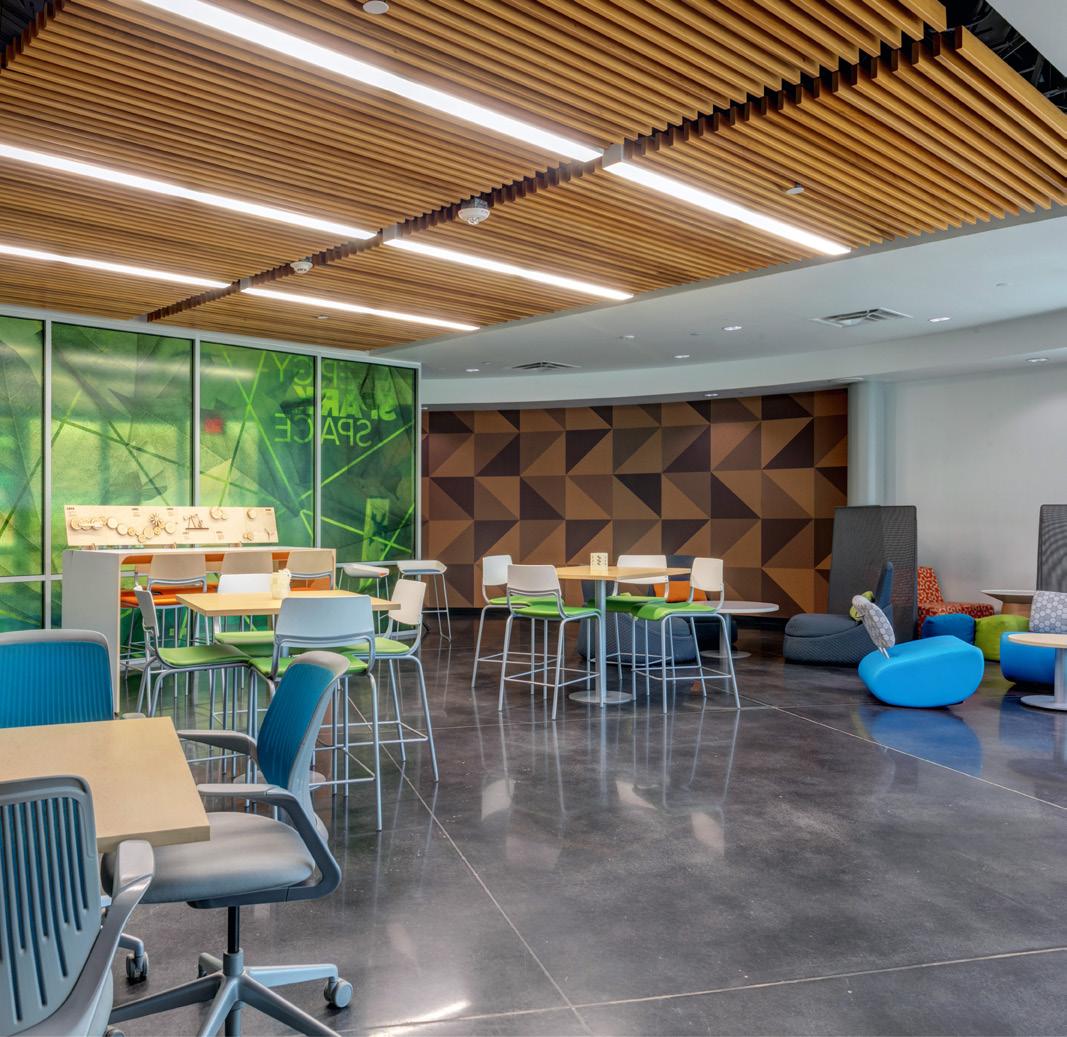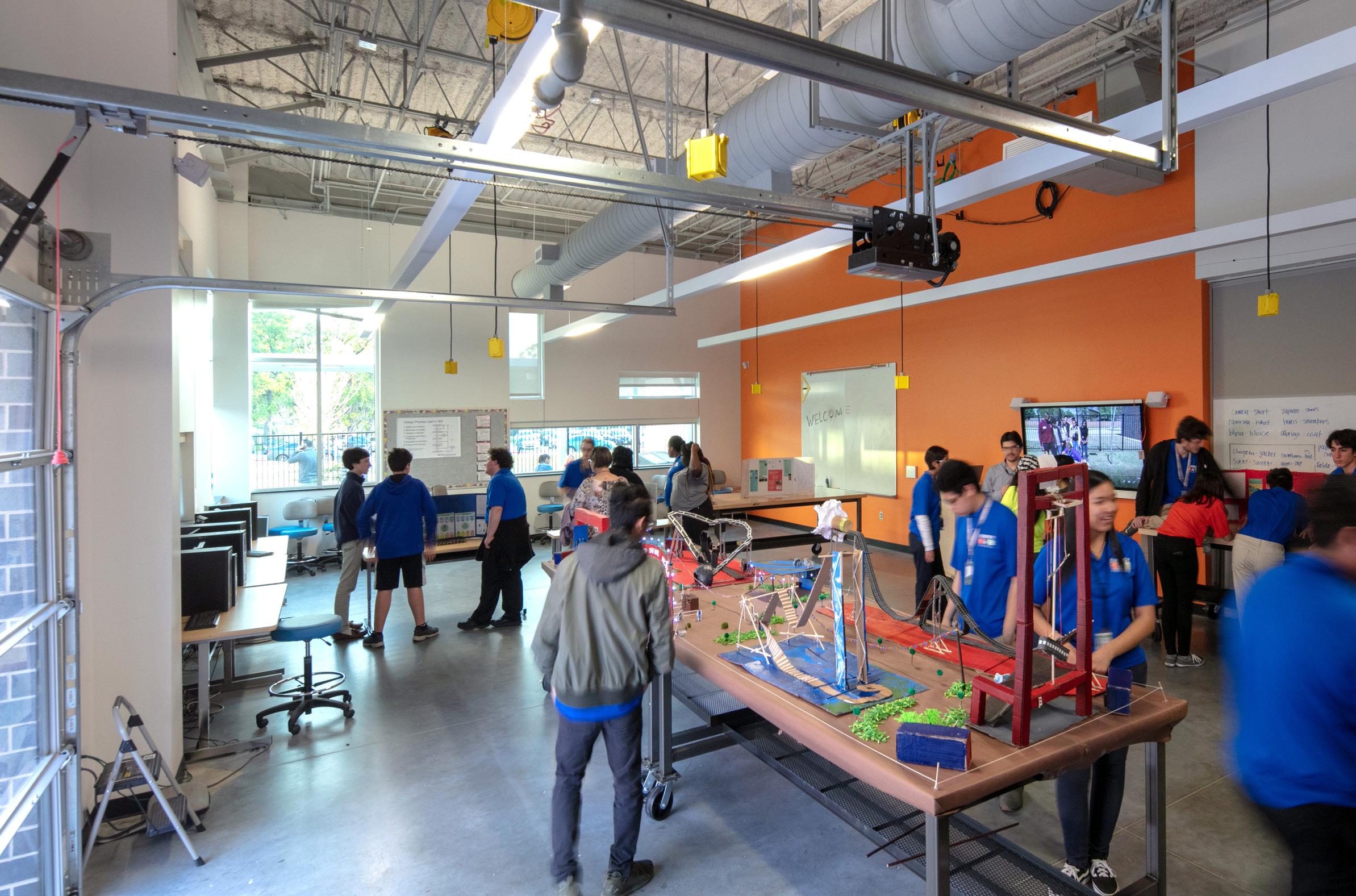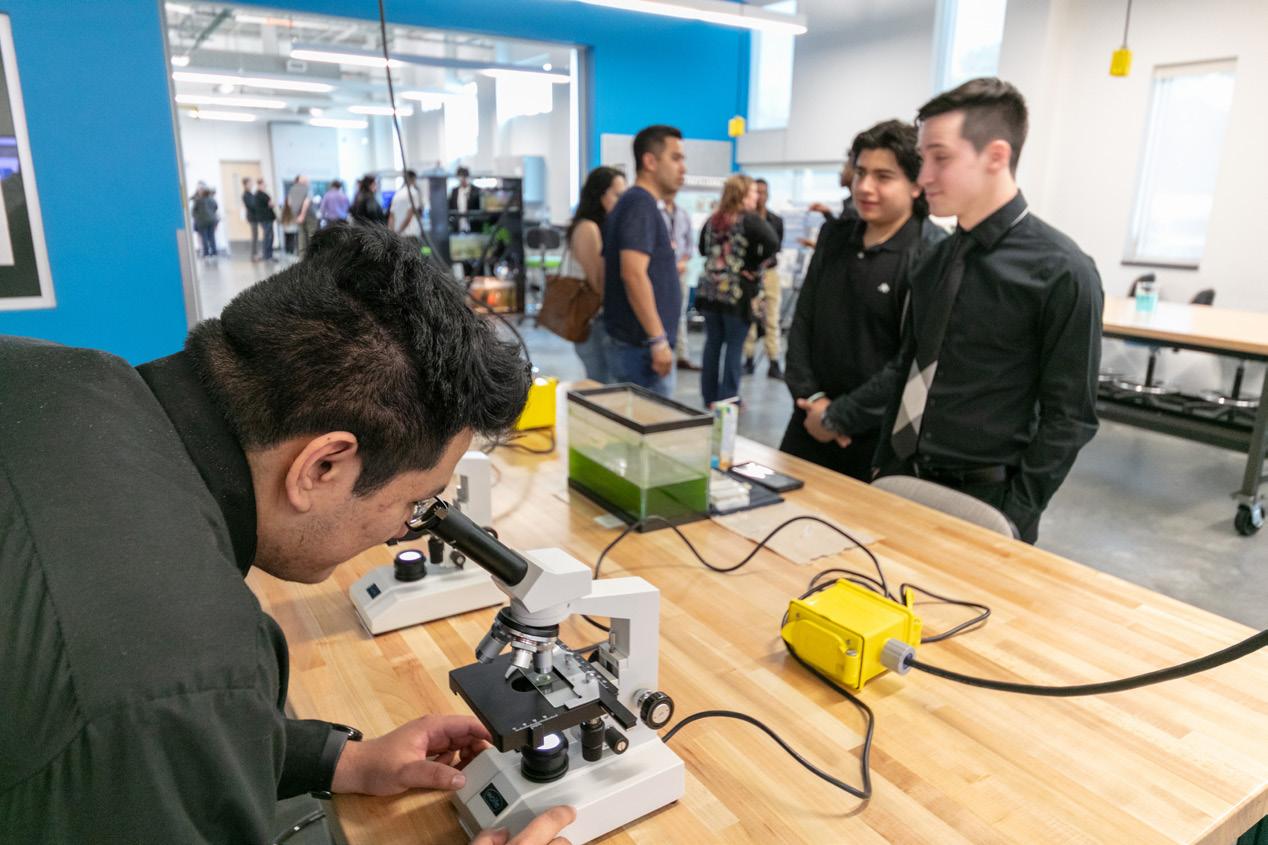
5 minute read
Career Inspired Learning Spaces
Lori Lambropoulos, Principal, Energy Institute High School, Houston ISD As an educator tasked with designing a first-in-the-nation, energy-themed high school, my first thought was, “I bet it would be a good idea to ask energy industry professionals what kind of employees they want in their corporations.” So that’s the first thing we did. Before we had teachers, students or a building, we visited the Offshore Technology Conference in Houston and went booth-by-booth asking questions and collecting data from a variety of professionals. We created an advisory board of energy professionals and we had a lot of conversations. Little did we know how these simple acts to connect would drive us to a mission and vision for our school that was dramatically different from a traditional high school. I’ve been in education for over two decades, why had I never thought of this before? I think it came from the synergy created by this public-private partnership. Professionals’ thoughts on needs for their skilled workforce changed the game plan for our school. All of a sudden, we were dreaming of a truly innovative schoolhouse built for project-based learning, high technology use, energy industry collaboration, student problem solving, and so much more. I think my colleague, Paul Niznik, Senior Consultant, Energy; Argus Media, sums it up nicely:
To meet the unique challenges in the energy industry, the Houston public schools launched the Energy Institute High School (EIHS) around a mission to groom the next generation of energy employees. Obviously, an energy-themed curriculum strong in STEM (science, technology, engineering, and math) would be the primary focus. But to really engage the students and prepare them for the modern energy workplace, Principal Lori Lambropoulos incorporated a radical shift, changing the entire style of education to project-based learning. I was lucky to join on as one of EIHS’s industry advisors, and we were quick to agree that an energy-themed school achieved more relevance when designed around a project-based learning style. In order to prepare young students for the skills needed in the energy industry, project-based work is essential. So far, the results have been spectacular. The competitive energy business requires that everyone wear more than one hat to keep companies lean. Smaller teams demand wider skill sets from each individual. With less oversight to guide or solve issues, employees also need to have the social skills to group-manage the wide set of personality types working on a deadline toward a specific outcome. There isn’t room in the energy world these days for the old stereotypes: the socially awkward engineer, the business majors who skipped science or the marketing personnel who don’t really understand how things work. Today’s energy sector professionals must have a broad base of learning experiences and the ability to apply them in a variety of situations. Take an energy company that requires a re-working of its operations due to new environmental standards. The company will build a team with internal operations expertise and well as members with design, environmental regulatory, and even public relations backgrounds. The project will have multiple tasks: diagnosing issues, designing solutions, communicating plans internally and publicly, and executing adaptations. Everyone will be challenged to work outside of a single, familiar job description.
By the time a student graduates from EIHS, he or she will have participated in dozens of group projects and will be ready to hit the ground running when they enter the workforce. I’ve been lucky enough to participate in advising on projects as an industry mentor, and I can testify how the hands-on approach focuses the students on subjects in new ways, bringing a personal back-and-forth engagement with concepts that, in my day, were pushed out in a oneway lecture to a passive audience.
Professionals who participate at the school are always struck by how project-based learning has organically built hard-to-find soft skills alongside subject mastery. The same personal challenges seen in industry projects are faced and conquered in the student projects: group dynamics, timeline pressures, expanding skillsets, and the apprehensive public presentations. When you meet an EIHS student with subject expertise and the personal skills sometimes missing in your own colleagues, you immediately think, “Leader.” I had a friend offer a summer position to an EIHS Senior right after a project showcase, joking that he hoped his student would remember him fondly when that student eventually became his boss. The “hard skills” also benefit from the projectbased approach. Recently, I brought in some of my Argus colleagues to be “industry assistants,” touching base with the student groups along the life cycle of one project assignment. I was particularly interested to see how quickly the student groups incorporated suggestions on modern project tools and professional techniques, whether it was organizational software, presentation tools, or analytical programs. Since the students were already working in groups with assignment outputs similar to our industry, the suggested professional tools made sense to the students and their workflow.
Sitting in rows isn’t how work gets done in the energy industry. In hindsight, it seems obvious to model a school and a teaching style around the way in which successful innovation happens in the professional world. EIHS took a bold step forward that may well become the new standard.
Paul Niznik, Senior Consultant, Energy; Argus Media
Energy Institute is on to something. Industry professionals come to our student project exhibitions in our up-todate and innovative space and they are floored. They engage in our students’ presentations, projects, and prototypes, and note how their problem-solving skills and execution are comparable to some of their own new employees who just graduated college. We know we’ve made a dent in the educational landscape of high schools. We see it in the different way our students now view their education—what it is, and how it’s done. For example, ask any EIHS student what their favorite subject is. They might look a little confused at first, but then they’ll say, “Oh, you mean my favorite project!”
MOBILE TABLES TO FACILITATE A VARIETY OF PROJECT NEEDS

POWER REEL ACCESS TO ENSURE FLEXILIBTY OF STUDENT LOCATION AND SAFETY












